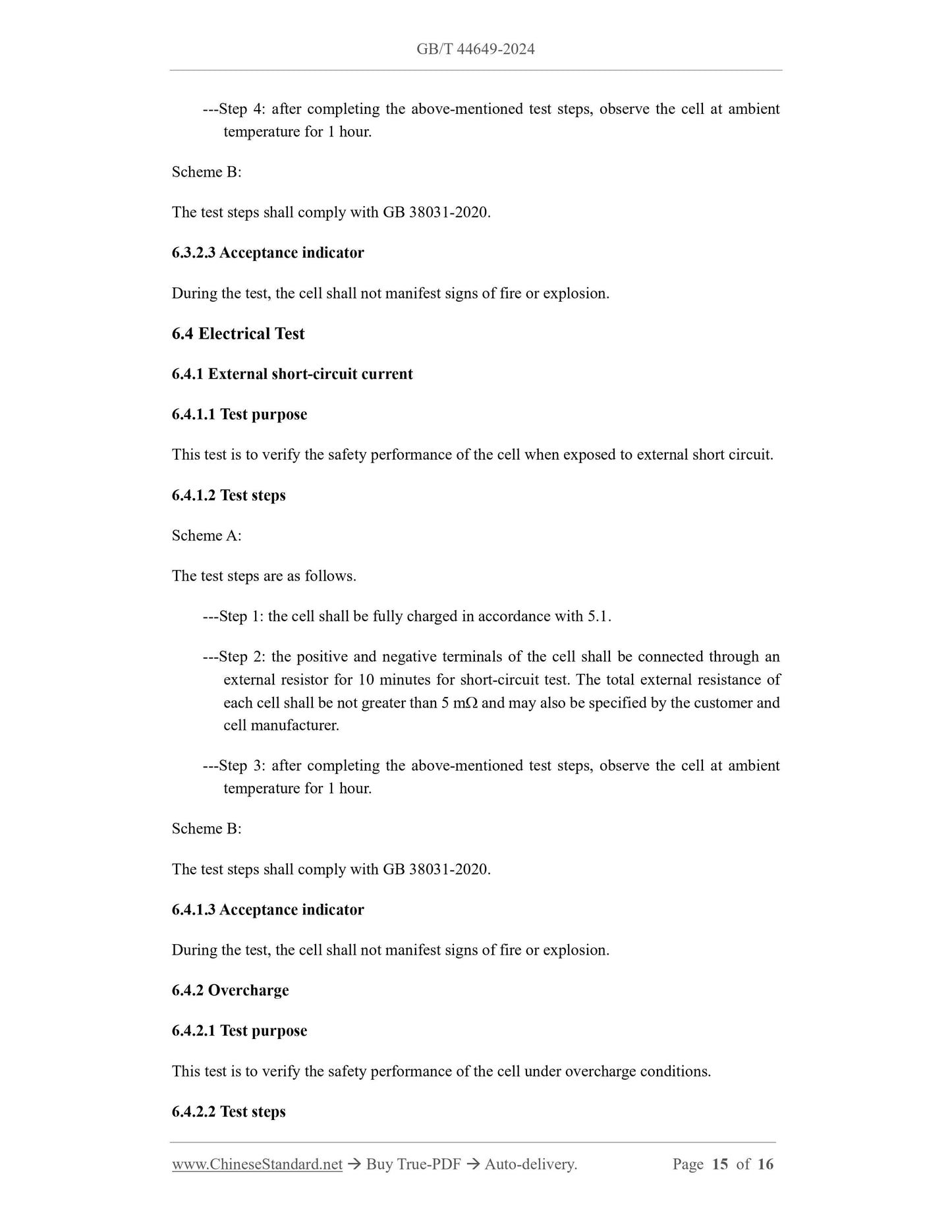1
/
of
8
www.ChineseStandard.us -- Field Test Asia Pte. Ltd.
GB/T 44649-2024 English PDF (GB/T44649-2024)
GB/T 44649-2024 English PDF (GB/T44649-2024)
Regular price
$275.00
Regular price
Sale price
$275.00
Unit price
/
per
Shipping calculated at checkout.
Couldn't load pickup availability
GB/T 44649-2024: Nickel-metal hydride cells and modules used for electric road vehicles - Safety requirements
Delivery: 9 seconds. Download (and Email) true-PDF + Invoice.Get Quotation: Click GB/T 44649-2024 (Self-service in 1-minute)
Newer / historical versions: GB/T 44649-2024
Preview True-PDF
Scope
This document specifies the testing and acceptance of the safety performance of nickel-metalhydride (Ni-MH) cells and modules used for electric road vehicles (EV). Electric road vehicles
(EV) include battery electric vehicles (BEV) and hybrid electric vehicles (HEV).
This document does not apply to the safety assessment of nickel-metal hydride (Ni-MH) cells
during transportation and storage.
NOTE 1: in this document, nickel-metal hydride (Ni-MH) secondary cells refer to sealed metal
hydride nickel cells: these sealed cells use nickel hydroxide as the positive electrode and
hydrogen alloy as the negative electrode, and alkaline aqueous solution, for example,
potassium hydroxide, as the electrolyte. Sealed cells are cells that can maintain their
sealed condition and will not release gas or liquid when charged and discharged within
the temperature range specified by the cell manufacturer. These cells are equipped with
a gas release device to prevent explosion.
NOTE 2: this document is to ensure the basic safety performance of the battery system under
expected use and reasonably foreseeable misuse during the normal operation of electric
road vehicles.
NOTE 3: in this document, all descriptions of cells are applicable to module testing.
Basic Data
| Standard ID | GB/T 44649-2024 (GB/T44649-2024) |
| Description (Translated English) | Nickel-metal hydride cells and modules used for electric road vehicles - Safety requirements |
| Sector / Industry | National Standard (Recommended) |
| Classification of Chinese Standard | K84 |
| Classification of International Standard | 29.220.20 |
| Word Count Estimation | 14,115 |
| Date of Issue | 2024-09-29 |
| Date of Implementation | 2025-04-01 |
| Issuing agency(ies) | State Administration for Market Regulation, China National Standardization Administration |
Share















